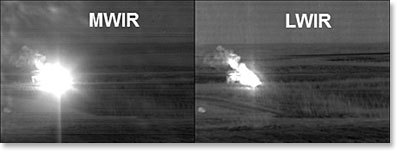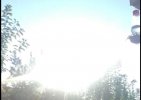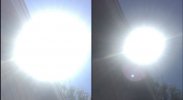DavidB66
Senior Member.
I noticed the following video referred to on Twitter in the context of Dave Falch's arguments against Mick's 'rotating glare' hypothesis. It shows planes passing overhead filmed simultaneously in standard light and infrared modes, using two lenses in the same camera. It is striking that the 'glare' of the planes is actually larger in the IR mode, and sometimes obscures the plane itself completely. Whether this is 'glare' in the same sense as in Mick's hypothesis I don't know. The photographer describes it as 'IR over exposes more'. I dare say David Falch would reply 'wrong kind of IR', or 'overexposure doesn't count', or maybe 'just a crappy amateur camera, not military grade FLIR', but the fact remains that, whatever you call it, the image of an object in IR can be larger than the image in normal light.
Source: https://www.youtube.com/watch?v=8oQdsyIwsLE
Source: https://www.youtube.com/watch?v=8oQdsyIwsLE




